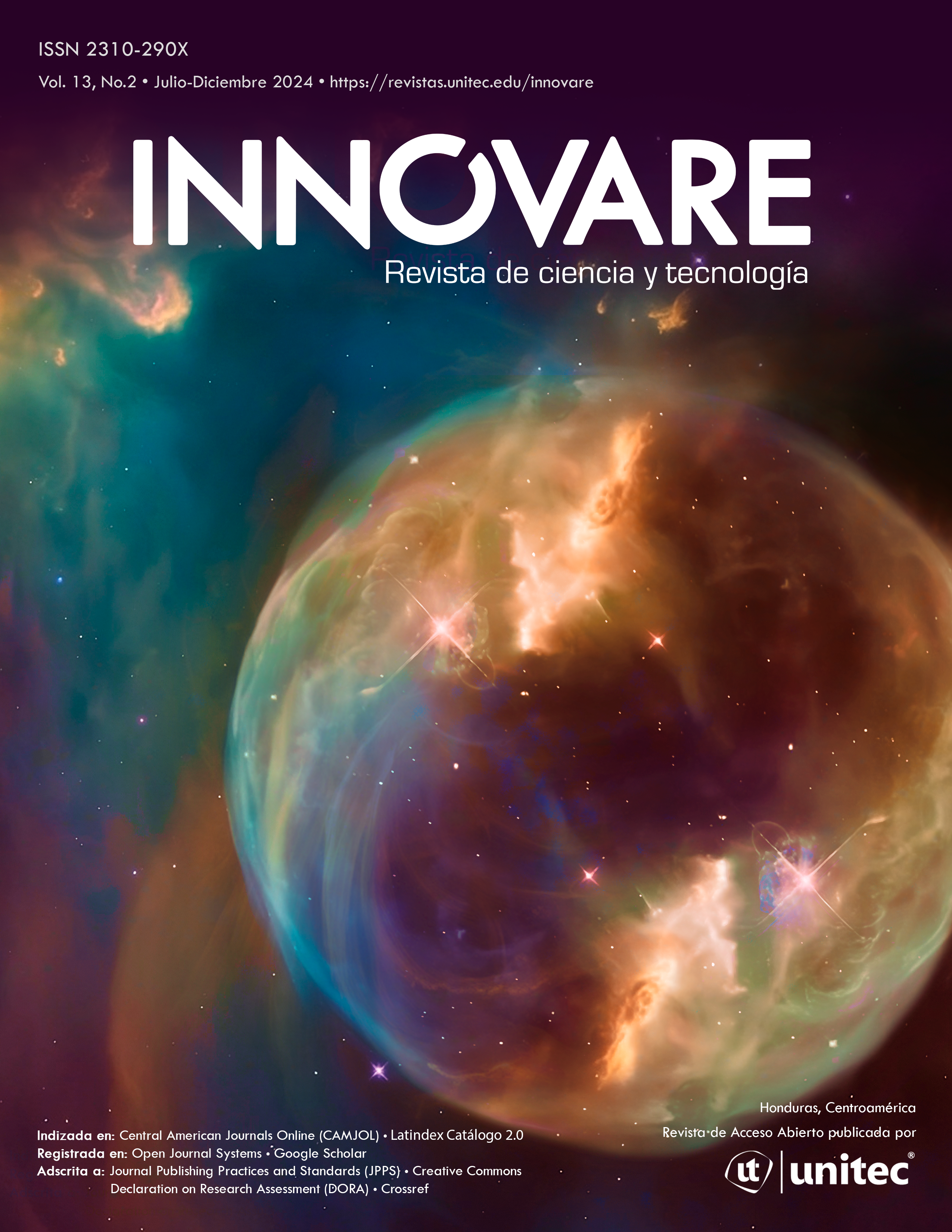Abstract
Introduction. Countries around the world are establishing targets for renewable energy generation. However, they are not able to meet these targets due to the intermittency of renewable energies. Hydrogen as an energy carrier can be considered a solution for the intermittency of renewable energies because it allows energy storage, provides frequency stability to the electrical network, and decreases the dependence on fossil fuels for energy generation. This article addresses the analysis of green hydrogen potential from solar photovoltaic and wind energy from the existing renewable plants in Honduras. Methods. Wind and solar photovoltaic energy generation from every plant studied in this research were evaluated using data obtained from simulations. Power-to-Power hydrogen plants were sized for each plant studied. Four different scenarios were proposed to evaluate the green hydrogen potential. Results. In the first two scenarios, hydrogen potential from all the solar photovoltaic energy and wind energy was evaluated. In the other two remaining scenarios, the potential from the hydrogen plants with the highest cost-benefit was estimated. Conclusion. This work can serve as a reference for sizing hydrogen Power-to-Power plants and can be taken into consideration for future power generation expansion plans in Honduras.
References
Ayodele, T. R., & Munda, J. L. (2019). Potential and economic viability of green hydrogen production by water electrolysis using wind energy resources in South Africa.
Blanco, H. (2021, July 22). Hydrogen production in 2050: How much water will 74 EJ need? Energy Post. https://energypost.eu/hydrogen-production-in-2050-how-much-water-will-74ej-need/ (Consultado el 23 de julio de 2022)
Chun-Ha, L., Xin-Jian, Z., Guang-Yi, C., Sheng, S., & Ming-Rou, H. (2009). Dynamic modeling and sizing optimization of stand-alone photovoltaic power systems using hybrid energy storage technology.
Crozzoli, P., Gullo, F., Milanesi, J., Sánchez Barros, A., & Trivellini, L. (2020). Análisis de prefactibilidad de una planta productora de hidrógeno. Instituto Tecnológico de Buenos Aires.
Empresa Nacional de Energía Eléctrica. (2022). Boletín estadístico: Junio 2022.
Fernandez, J. L. O., Avila, J. L. O., & Ordoñez, R. A. (2019). Potential effect on the energetic matrix of Honduras with the installation of residential photovoltaic generators for self-consumption. 2019 IEEE 39th Central America and Panama Convention (CONCAPAN XXXIX), 1–6. IEEE. https://doi.org/10.1109/CONCAPANXXXIX47272.2019.8976994
Huang, Y., & Liu, S.-J. (2020). Chinese green hydrogen production potential development: A provincial case study. IEEE. International Renewable Energy Agency (IRENA). (2019). Hydrogen: A renewable energy perspective.
Lampert, D., Cai, H., & Elgowainy, A. (2016). Wells to wheels: Water consumption for transportation fuels in the United States.
Loyo Gómez, M. de L. (2018). Reporte final de estadía.
Mahsa, D., Campana, P., & Thorin, E. (2020). Power-to-hydrogen storage integrated with rooftop photovoltaic systems and combined heat and power plants.
Mason, I. G., Verbytska, A., & Miller, A. J. V. (2019). Using surplus electricity to produce green hydrogen.
Mejía, A., Calderón, N., & Flores, W. (2022). Mapa de generación renovable en Honduras. Observatorio de Energía de UNITEC.
Secretaría de Energía, Recursos Naturales, Ambiente y Minas. (2022). Agua de Honduras. https://aguadehonduras.gob.hn/ (Consultado el 15 de julio de 2022)
Secretaría de Estado en el Despacho de Energía. (2020). Balance energético nacional.
U.S. Department of Energy. (2022). Electrolyzers water consumption.
Zúniga Paguada, C., & Reyes Duke, A. M. (2025). Potential and economic feasibility of green hydrogen production from hydropower in Honduras. E3S Web of Conferences, 629, Article 05007. https://doi.org/10.1051/e3sconf/202562905007

This work is licensed under a Creative Commons Attribution-NonCommercial-NoDerivatives 4.0 International License.
Copyright (c) 2025 Maria Celeste Parada Acosta, Alicia María Reyes-Duke, Héctor Villatoro Flores


